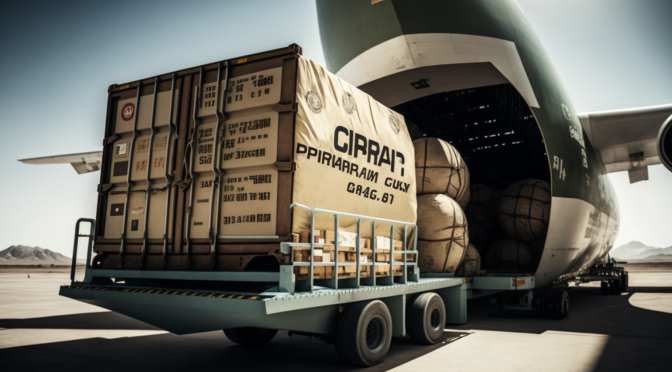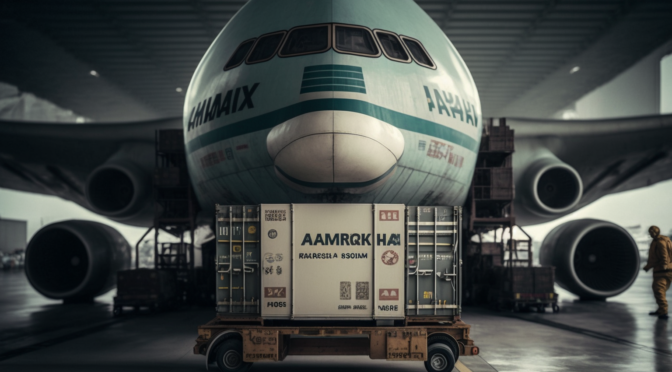When it comes to shipping from China to the United States, there are a lot of considerations to be made. From finding the right shipping partner to understanding the associated costs of importing, it can be hard to know where to start. This article will help shed light on the process and explain the various elements of shipping from China to the USA, and how to choose the right partner for your needs.
Understanding Shipping From China to the USA
Shipping goods from China to the United States can be a daunting prospect for those unfamiliar with the process. But with the right partner, it doesn’t have to be.
- The first step in shipping from China to the USA is to find a reliable shipping partner. It’s important to find a company that is experienced in the process, as well as one that provides competitive rates. A good shipper will be able to provide a variety of shipping options, including air, sea, and express services. They should also be able to provide assistance with paperwork, such as customs clearance and related documents.
- Once you’ve found a partner, you’ll need to decide on the right shipping method. Air freight is typically the fastest and most expensive option, while sea freight is slower but much more cost-effective. You should also make sure to familiarize yourself with the customs regulations of the country you’re shipping to, as there may be restrictions or taxes that need to be taken into account.
- In addition to the cost of the shipment, you’ll also need to factor in the cost of insurance. This is especially important if you’re shipping high-value goods, as insurance provides financial protection in the event that something goes wrong during the shipping process. It’s important to make sure that you understand the terms and conditions of the insurance policy before you sign up.
You can find even more hints for understanding deliveries from China to the USA on the carrier’s page. By understanding the process of shipping from China to the USA, you can be sure to choose the right partner and shipping method for your needs. With the right partner, you can ensure that your goods will arrive safe and sound, and on time.
The Benefits of Working With a Shipping Partner
Shipping goods from one part of the world to another is a complex process. With numerous variables to consider, from understanding customs regulations and shipping costs to finding the most efficient shipping routes, it can be difficult to manage the process on your own. This is why many companies choose to partner with a shipping partner to help them manage their goods’ journey. A shipping partner can provide many benefits, including:
- Cost Savings: Working with a shipping partner can help you save money on shipping costs by negotiating with carriers on your behalf. This can lead to reduced overhead costs, helping your bottom line.
- Efficiency: A shipping partner can help you streamline the logistics process, which can lead to faster delivery times for your goods and improved customer satisfaction.
- Expertise: A shipping partner can provide valuable insight into the shipping process that you may not have access to, such as the latest regulations and customs requirements. This can help you to ensure that your goods arrive safely and on time.
- Flexibility: A shipping partner can help you find the most efficient route for your goods and provide you with the flexibility to alter your shipping needs as needed.
Factors to Consider When Choosing a Shipping Partner
- The first factor to consider when selecting a shipping partner is cost. Shipping can be expensive, so it’s important to find the most cost-effective option for your particular situation. Different shipping partners have different rates, so it’s important to do your research and compare prices before making a decision. Additionally, some shipping partners offer discounts for bulk orders or if they are transporting multiple items.
- Another factor to consider when selecting a shipping partner is the type of service offered. Different shipping partners offer different services, such as ground shipping, air shipping, or international shipping. Depending on the type of goods you are shipping and the destination, it is important to make sure the shipping partner is able to provide the type of service you require.
- It is also important to consider the reputation of the shipping partner. You should do your research and read reviews to make sure the company has a good track record with customers. Additionally, you should make sure the shipping partner is insured and is able to provide proof of insurance.
- Finally, it is important to consider the customer service of the shipping partner. You want to make sure the company is easy to reach and will be available to answer your questions or concerns. Additionally, it is important to ensure that the company is able to provide timely updates on the progress of your shipment.
Tips for Successfully Navigating the Shipping Process
Navigating the shipping process can be a daunting task, especially for those who are unfamiliar with the process. Whether importing goods from overseas or shipping goods domestically, there are many steps to consider to ensure a successful end result.
To start off, it is important to understand the different types of carriers and shipping methods. Different carriers offer different services, and selecting the right one for your needs is essential. When shipping goods domestically, you may wish to use a carrier such as UPS, FedEx, or the United States Postal Service (USPS). When shipping overseas, you may want to use a freight forwarder or other international carrier.
Before shipping, you will need to fill out the relevant paperwork and customs forms. These forms will need to be filled out accurately and completely to ensure your goods pass through customs smoothly. You will also need to factor in the cost of duties and taxes, which will vary depending on the country of origin and destination of the goods. The World Customs Organization provides information on their website about the different customs rules and regulations that apply in each country.
By taking the time to understand the different elements of the shipping process and choosing the right carrier and shipping method for your needs, you can ensure that your goods arrive safely and on time. Also, we advise you to read our article, where we talked about the process of transporting cargo from China to the USA.
FAQ
The key elements of shipping from China to the USA include finding a reliable shipping partner, understanding customs regulations, selecting the appropriate shipping method, and accounting for insurance costs.
A shipping partner can provide cost savings, efficiency, expertise, and flexibility when shipping goods.
Factors to consider when selecting a shipping partner include cost, type of service offered, reputation, and customer service.


